The number of Social Security contributors surpasses 21.2 million in September, with more than 10 million women registered
News - 2024.10.2
Social Security registered 21,220,899 contributors in August, discounting seasonality and the calendar effect. This represents an increase of 377,963 employed people so far this year. There have now been 53 months of uninterrupted growth in employment in this series, with 22,220 more registered workers this month, setting a new high.
In seasonally adjusted terms, the figure for total contributors has increased by 1.86 million since before the pandemic.
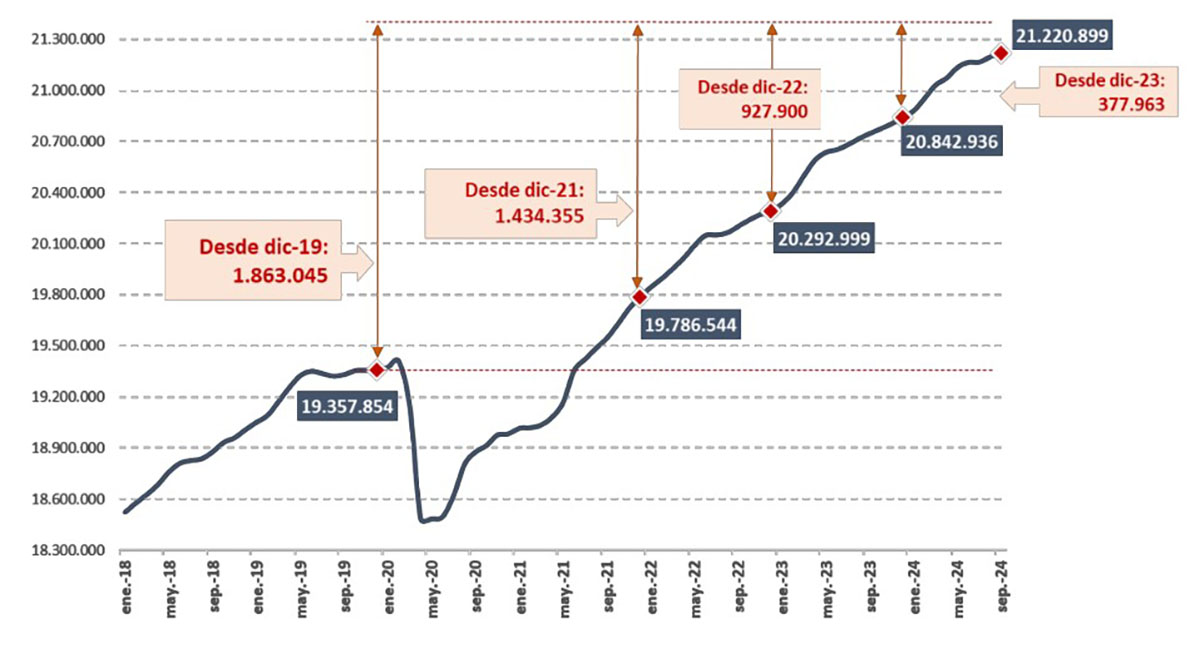
This month, average affiliation (original series) is close to 21.2 million (21,198,206), making this the September with the highest level of employment in the historical series, with 473,411 more contributors than a year ago (+2.3%). This is 8,805 more employed people than in August, a higher increase than the 3,222 increase in the same period of 2019, before the pandemic.
In a month-on-month comparison, new contributors were recorded in sectors such as Education (+4.83%), as is usual due to the start of the academic year, and Administrative Activities (+1.64%). Some sectors lost registered workers due to the end of the summer season, particularly Commerce (-1.57%) and Hotels and Restaurants (-1.85%).
In year-on-year terms, most sectors are gaining contributors. Of note is the growth in Education, with 94,425 more contributors (+9.6%), due in part to the effect of the switch to include contributors who were in Public Administrations a few months ago. There were also increases in the number of contributors in Arts, Recreation and Entertainment Activities (+4.5%), Transport and Storage (+4.2%), Hotels and Restaurants (+3.9%) and Health Care Activities (+3.6%).
The daily series exceeded 21.2 million contributors from 10 to 30 September.
The Minister for Inclusion, Social Security and Migration, Elma Saiz, explains: "We have surpassed 21.2 million, in seasonally adjusted terms, and we are also at historically high levels in the original series. The contribution of foreign affiliates to the growth is very remarkable, with almost 2.9 million registered".
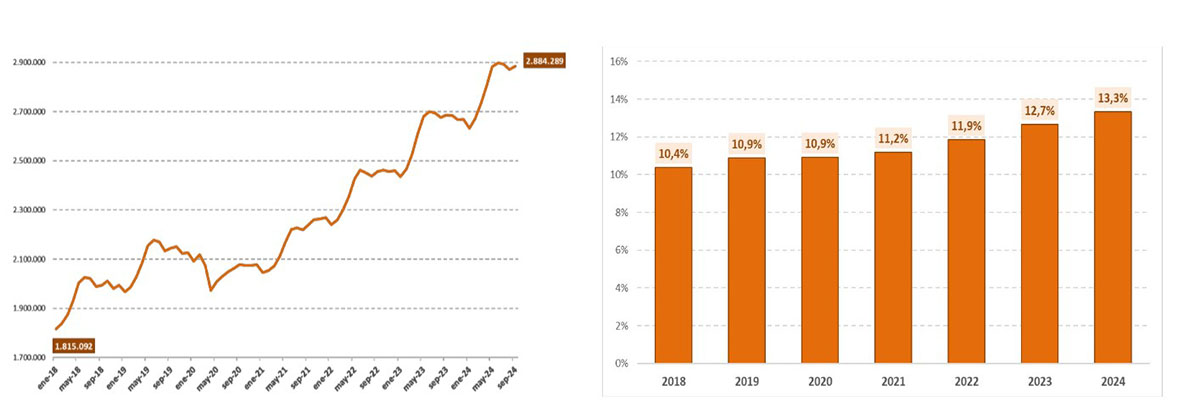
Over the last decade, employment of foreigners has grown faster than that of nationals. In September, contributors from other countries accounted for 13.6 per cent of the total; that is almost 2.9 million workers in the original series, one million more than at the start of 2018.
Higher employment growth than other major European economies
Moreover, job creation compared to pre-pandemic levels in Spain (+9.5%) outpaced that of the major European countries (France, +5.1%, Italy +4.1% and Germany, +1.7%). These countries have experienced greater dynamism since the beginning of the war in Ukraine. In Spain, job creation grew by 7.5%, compared to 5.1% in Italy, 2.2% in France and 1.9% in Germany.
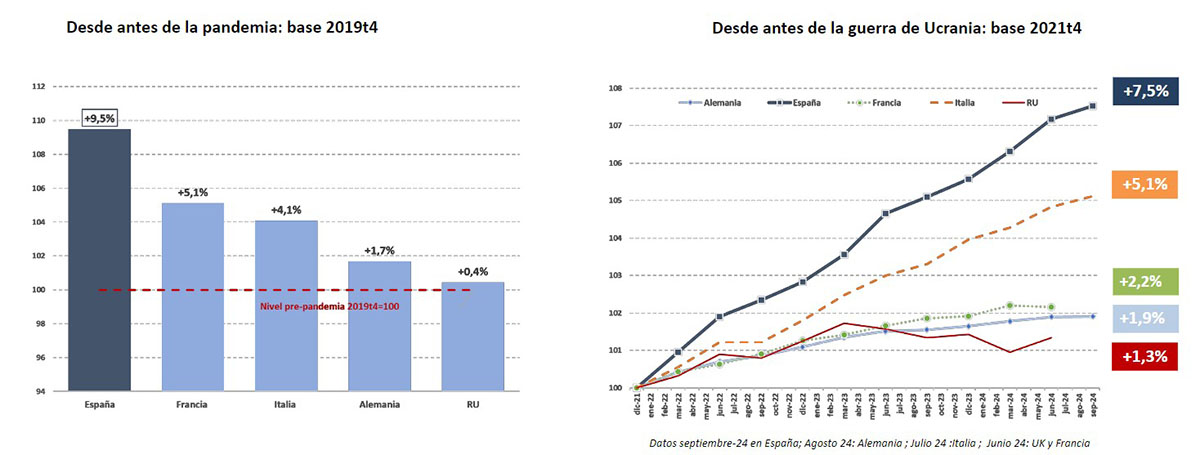
More than 10 million women registered
In September, the average number of women contributors once again exceeded 10 million, with 10,001,861 employed women, representing 47.2% of the total number of workers.
Female employment has grown by 11.8% since the year before the pandemic and is four percentage points higher than the 7.8% increase among men. In year-on-year terms, the figure for women contributors is also outpacing that of male contributors: 2.6%, compared to 2% for men.
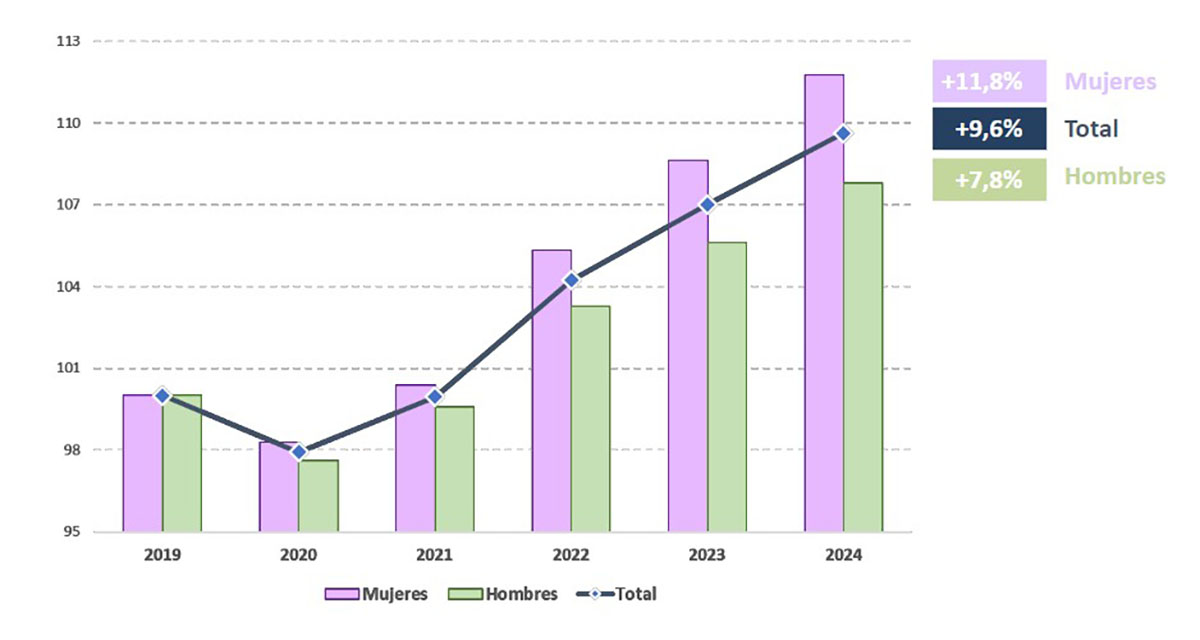
Meanwhile, youth employment has also experienced above-average dynamism, with an increase of 15.7% since 2019, 6 points higher than the overall percentage increase of 9.6%, and 13.4% since the implementation of the labour reform, almost double the overall increase.
High value-added occupations
The increased contributor figures compared to the pre-pandemic level is particularly strong in high value-added sectors, such as Information and Communication and Professional, Scientific and Technical Activities. These activities also show significant growth so far in 2024 (with 77,000 more workers) and increases of around 4%, compared to the national average of 2.8%.
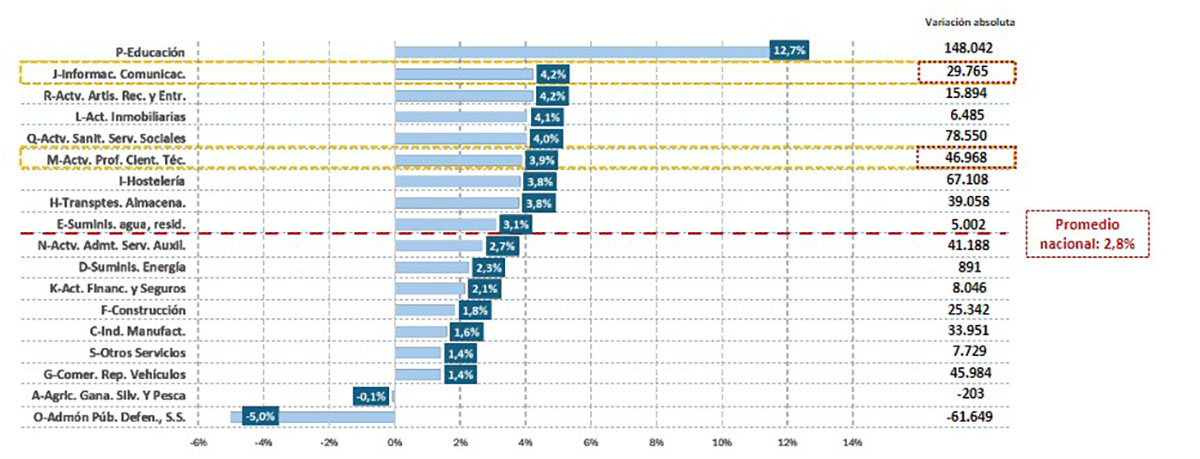
More than 3.5 million more workers with permanent contracts since the labour reform was passed
Not only are there more jobs, their quality has also increased. There are currently more than 14 million people in employment with permanent contracts, of whom more than 9.7 million work full-time. This represents nearly 3.5 million more contributors (3,527,500) with permanent contracts since the approval of the labour reform (+32%).
In the last year, the number of permanent full-time contracts has grown more sharply (348,671 more) than part-time contracts (89,881 more), while the number of permanent temporary contracts has fallen (14,840 fewer). This means that 64.1% of the new Social Security contributors with permanent contracts in the last year are full-time.
In addition, the average duration of contracts that have been terminated has increased by 32.5% since 2019.
The dynamism of the labour market and the increase in the quality of employment are helping to strengthen the sustainability of the pension system (revenue from social security contributions is growing at a rate of close to 8%) and the ratio of contributors to pensioners stands at 2.44, the highest level since 2011.
Non official translation







